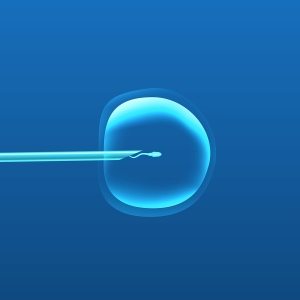Herzliya Medical Center
Tel: +972-9-959-4888
09:00-18:00
 A relatively new medical treatment, considered to be a breakthrough in the treatment of male infertility that stems from a low sperm count or from problems with the vas deferens. The treatment is a type of in vitro fertilization (IVF), but as distinct from IVF, in micromanipulation, a single sperm cell is injected directly into the egg (rather than placing semen together with eggs in laboratory conditions, as is done in IVF).
A relatively new medical treatment, considered to be a breakthrough in the treatment of male infertility that stems from a low sperm count or from problems with the vas deferens. The treatment is a type of in vitro fertilization (IVF), but as distinct from IVF, in micromanipulation, a single sperm cell is injected directly into the egg (rather than placing semen together with eggs in laboratory conditions, as is done in IVF).
This treatment is particularly effective in a number of types of fertility problems, primarily where the number of sperm cells in the semen is not sufficient for fertilization, where the movement of the sperm cells is not optimal and generally does not enable the penetration of the sperm cell into the egg, or where the shape of the sperm cells also makes fertilization difficult.
After the sperm is extracted from the man, the sperm is enhanced, in order to find the spermatozoon whose structure, shape and movement are optimal. If suitable sperm cells are not found, they will be obtained by retrieving sperm from the testicles, especially where the problem stems from problems with the sperm transport passages. If this model of an attempt to obtain sperm cells also does not succeed, a specimen will be obtained from a biopsy of the testicles in order to try to locate a sperm cell from this tissue.
Egg retrieval from the woman is performed in an identical manner to that in regular in vitro fertilization (IVF) treatment. Prior to the treatment, the woman is given medicines that serve to increase egg production, so that in the egg production cycle, more than one egg will be formed.
After the egg and the sperm are obtained, the procedure for introducing the sperm cell into the egg is performed, in order to effect fertilization. The process is done using a microscope apparatus call a micromanipulator, composed of two arms. In one arm, the egg is held by means of vacuum, and in the other arm, the selected sperm cell, in a thin tube, is held. The thin tube is introduced into the egg, and the spermatozoon is transferred from it, thus achieving fertilization.
After fertilization is achieved, the fertilized egg is introduced into the woman’s uterus, similarly to the IVF procedure, using a thin tube. It turns out that the efficacy of micromanipulation is high, and the rate of pregnancies achieved for couples with a severe fertility problem in the man is similar to the rate of pregnancies achieved using IVF in couples with a fertility problem in the woman only.
Currently, approximately one half of all in vitro fertilization cycles performed in Israel is done by this method, similarly to international statistics.